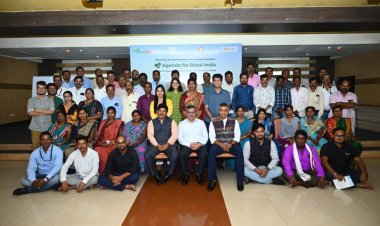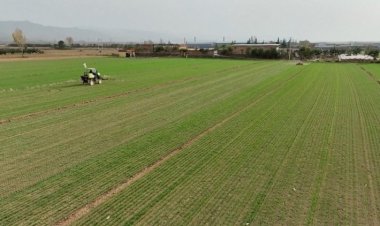Import of pulses from Brazil, Argentina amid talk of self-reliance
For the import of pulses, the government has waived import duty on arhar, urad and masoor (lentils) till 31 March 2025. Recently, the government has extended the duty-free import of yellow peas used as a substitute for chana (gram) by two months to 30 June 2024.

On one hand, pulses production is not increasing as the farmers of the country are not getting the right price for pulses, while on the other hand pulses will be imported by making long term deals with countries like Brazil and Argentina. More than 20,000 tonnes of urad is expected to be imported from Brazil while pigeon pea will be imported from Argentina.
Controlling the inflation of pulses remains a challenge for the government in the election year. The retail inflation rate of pulses has been more than 17 percent in March whereas in February it was close to 19 percent. In such a situation, to overcome the shortage of pulses, it has to be imported from abroad. But the basic question is why the production of pulses is not increasing and why is there a need for import of pulses?
Madhya Pradesh farmer leader Kedar Sirohi says that instead of guaranteeing MSP, the government is guaranteeing the import of pulses whereas the farmer remains deprived of the right price for his produce. This year the prices of gram are much lower than last year. But import of pulses is being promoted by giving exemption in import duty till 2025. This is not only adverse for the farmers but also for the food self-sufficiency of the country.
The central government wants to bring stability in the supply of pulses by entering into long-term contracts with many countries. Earlier, such agreements have been signed for import of pulses from Mozambique, Tanzania and Myanmar.
For the import of pulses, the government has waived off import duty on arhar, urad and masoor (lentils) till 31 March 2025. Recently, the government has extended the duty-free import of yellow peas used as a substitute for chana (gram) by two months to 30 June 2024. But the problem is that despite the import of pulses, consumers are not getting relief from inflation. Therefore, the government has increased monitoring of pulses stock from April 15.
The compulsion to import pulses can be linked to the decreasing production of pulses in the country. The Agriculture Ministry estimates that the production of pulses in the year 2023-24 will be 234 lakh tonnes, whereas a year ago, 261 lakh tonnes of pulses were produced in the country. This year, pulses production in the Kharif season is estimated to decline to 71.18 lakh tonnes from last year's 76.21 lakh tonnes.
The production of urad in Kharif will decline from 17.68 lakh tonnes last year to 15.50 lakh tonnes, while the production of moong in Kharif is estimated to decline from 17.18 lakh tonnes to 14.05 lakh tonnes.
The country's dependence on pulses import has increased because the area under sowing and production of pulses has decreased instead of increasing in the last two-three years. In 2021-22, the area under sowing of pulses in the country was 307.31 lakh hectares, which decreased to 257.85 lakh hectares in 2023-24.
Similarly, pulses production had reached 273 lakh tonnes in 2021-22, which is expected to decline to 234 lakh tonnes in the year 2023-24. This means that the area of pulses has decreased by 16 percent and production by 14 percent in two years.
Strangely, this happened at a time when the government was claiming to become self-sufficient in pulses production.



 Join the RuralVoice whatsapp group
Join the RuralVoice whatsapp group









































